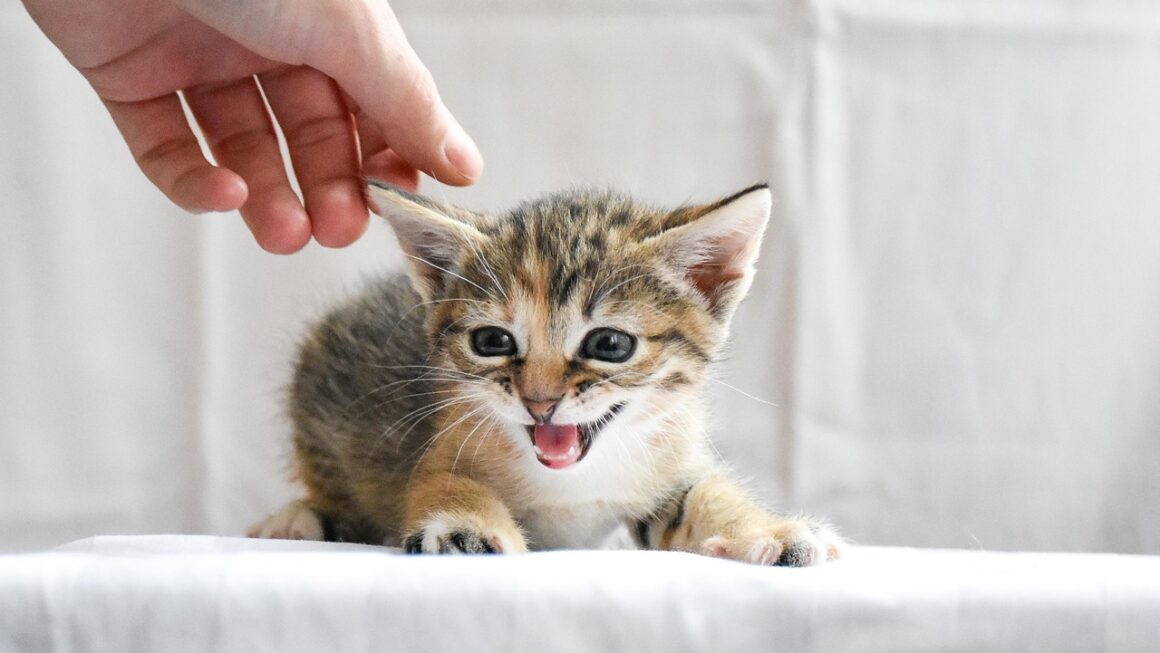Small mammals, often overlooked due to their size, play a crucial role in our ecosystems. From seed dispersal to pest control, these tiny creatures wield a significant impact on the health and balance of the natural world. This article will delve into the fascinating world of small mammals, exploring their diversity, ecological importance, and the challenges they face. Whether you’re a nature enthusiast, a student of biology, or simply curious about the wildlife around you, this guide will provide a comprehensive overview of these often-unseen inhabitants of our planet.
Understanding Small Mammals: A Definition
Defining “Small” Mammals
What exactly qualifies as a “small mammal”? While there’s no universally agreed-upon weight or size limit, we generally refer to mammals that are significantly smaller than humans and other larger mammals. Typically, this includes creatures like rodents, shrews, bats, and some lagomorphs (rabbits and hares). The term is often used in ecological studies to group animals with similar life histories and ecological roles.
Common Characteristics of Small Mammals
Despite their diversity, small mammals often share several key characteristics:
- High Reproductive Rate: Many small mammals reproduce quickly and frequently, allowing populations to rebound quickly after disturbances. For example, some mice species can produce litters every few weeks.
- Short Lifespan: Compared to larger mammals, small mammals have relatively short lifespans, often only a year or two in the wild. This is linked to their higher metabolic rate and greater vulnerability to predation.
- Nocturnal or Crepuscular Behavior: Many small mammals are most active at night or during twilight hours (dawn and dusk) to avoid predators. This behavior can make them difficult to observe directly.
- High Metabolic Rate: To maintain their body temperature and energy levels, small mammals have a high metabolic rate, requiring them to eat frequently.
- Variety of Diets: Small mammals exhibit a wide range of dietary habits, from herbivores (eating plants) and granivores (eating seeds) to insectivores (eating insects) and even carnivores (eating meat).
Ecological Importance of Small Mammals
Seed Dispersal and Plant Regeneration
Many small mammals play a crucial role in seed dispersal, helping plants to colonize new areas and maintain genetic diversity. Squirrels, chipmunks, and voles, for example, bury nuts and seeds as food caches. Often, these caches are forgotten, allowing the seeds to germinate and grow into new plants. This process is particularly important for forest regeneration after disturbances like wildfires.
Pest Control and Insect Regulation
Insectivorous small mammals like shrews and bats are valuable allies in controlling insect populations. They consume vast quantities of insects, helping to regulate populations of agricultural pests and nuisance insects. For instance, a single bat can eat thousands of insects in a single night. This natural pest control reduces the need for chemical pesticides, promoting healthier ecosystems.
Soil Aeration and Nutrient Cycling
The burrowing activities of small mammals like gophers and moles contribute to soil aeration and nutrient cycling. Their tunnels loosen the soil, improving water infiltration and root growth. They also mix organic matter into the soil, enriching it with nutrients. This activity supports healthy plant growth and overall ecosystem productivity.
Food Source for Predators
Small mammals form a critical link in the food chain, serving as a primary food source for many predators, including birds of prey (owls, hawks), snakes, foxes, coyotes, and weasels. The abundance of small mammals directly affects the populations of these predators, influencing the entire ecosystem’s stability. A decline in small mammal populations can have cascading effects on the predator community.
Common Types of Small Mammals
Rodents: The Most Diverse Group
Rodents are the most diverse order of mammals, comprising about 40% of all mammal species. They are characterized by their continuously growing incisors, which they must gnaw on to keep them from overgrowing. Common examples include:
- Mice and Rats: Found in a wide range of habitats, from forests and grasslands to urban environments.
- Squirrels and Chipmunks: Arboreal or terrestrial rodents known for their bushy tails and nut-storing behavior.
- Voles and Lemmings: Small, mouse-like rodents that are important herbivores in many ecosystems.
- Beavers and Muskrats: Semi-aquatic rodents adapted to life in and around water.
Insectivores: Shrews and Moles
Insectivores are a group of small mammals that primarily feed on insects and other invertebrates. They are characterized by their small size, pointed snouts, and sharp teeth. Common examples include:
- Shrews: Small, mouse-like mammals with high metabolic rates and a voracious appetite for insects.
- Moles: Burrowing mammals with strong front claws adapted for digging tunnels in the soil.
Chiroptera: Bats
Bats are the only mammals capable of true flight. They are incredibly diverse, with over 1,400 species worldwide. Bats play important roles in pollination, seed dispersal, and insect control. Examples include:
- Insectivorous Bats: The most common type of bat, feeding on insects and other small invertebrates.
- Fruit Bats: Found in tropical and subtropical regions, feeding on fruits and nectar.
- Vampire Bats: A specialized group of bats that feed on the blood of other animals.
Lagomorphs: Rabbits and Hares
Lagomorphs are a group of herbivorous mammals characterized by their long ears, powerful hind legs, and two pairs of incisors in the upper jaw. Examples include:
- Rabbits: Social animals that live in burrows and are known for their high reproductive rate.
- Hares: Solitary animals that live above ground and are generally larger and faster than rabbits.
Threats to Small Mammal Populations
Habitat Loss and Fragmentation
One of the most significant threats to small mammal populations is habitat loss and fragmentation due to deforestation, agriculture, and urbanization. As habitats are destroyed or broken up into smaller patches, small mammals lose access to food, shelter, and breeding sites. This can lead to population declines and even local extinctions.
Climate Change
Climate change is also having a profound impact on small mammal populations. Changes in temperature and precipitation patterns can alter the distribution and abundance of food resources, disrupt breeding cycles, and increase the risk of extreme weather events. For example, warmer temperatures can lead to earlier snowmelt, exposing small mammals to predators and increasing the risk of starvation.
Invasive Species
Invasive species, such as non-native rodents and predators, can outcompete or prey on native small mammals, leading to population declines. For example, the introduction of the brown rat to many islands has had devastating effects on native rodent populations. Controlling invasive species is crucial for protecting native small mammal populations.
Pollution and Pesticides
Pollution, including pesticides and heavy metals, can also harm small mammals. Pesticides can directly poison small mammals or indirectly affect them by reducing the availability of their insect prey. Heavy metals can accumulate in the tissues of small mammals, leading to health problems and reduced reproductive success.
Conservation Efforts and How You Can Help
Supporting Habitat Conservation
Supporting habitat conservation efforts is crucial for protecting small mammal populations. This can involve donating to conservation organizations, volunteering for habitat restoration projects, and advocating for policies that protect natural areas.
Reducing Pesticide Use
Reducing pesticide use can help to protect small mammals from poisoning and habitat degradation. This can involve using natural pest control methods in your garden, buying organic produce, and supporting policies that restrict the use of harmful pesticides.
Creating Wildlife-Friendly Habitats
You can create wildlife-friendly habitats in your own backyard by providing food, water, and shelter for small mammals. This can involve planting native trees and shrubs, building birdhouses and bat houses, and leaving leaf litter and brush piles for shelter.
Citizen Science
Participating in citizen science projects can help researchers to monitor small mammal populations and assess the effectiveness of conservation efforts. This can involve setting up camera traps to monitor wildlife activity, recording sightings of small mammals, and collecting data on their distribution and abundance. Websites like iNaturalist and eMammal are great resources to find citizen science opportunities near you.
Conclusion
Small mammals, though often unseen, are vital components of healthy ecosystems. Their roles in seed dispersal, pest control, soil aeration, and as a food source for predators are essential for maintaining ecological balance. However, these tiny creatures face numerous threats, including habitat loss, climate change, invasive species, and pollution. By understanding their importance and the challenges they face, we can take action to protect them and ensure that they continue to thrive for generations to come. Whether through supporting conservation efforts, reducing pesticide use, creating wildlife-friendly habitats, or participating in citizen science, every action, no matter how small, can make a difference in the lives of these fascinating and ecologically important animals.




